
CSR・CSV
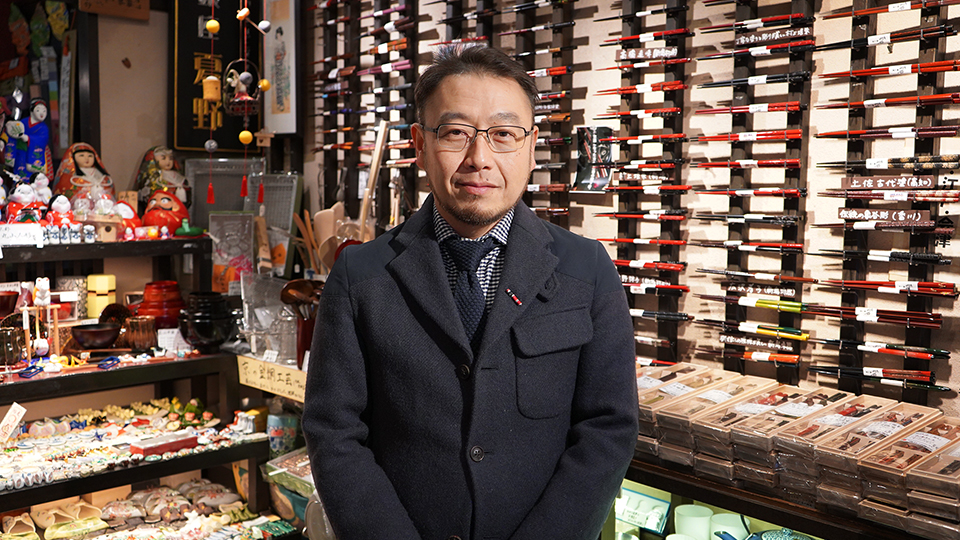
Ginza×CSR・CSV Vol.35 Ginza Natsuno
A rich and sustainable life with chopsticks
2020.01.01
Ginza×CSR・CSV Vol. 35 will introduce Ginza Natsuno, a chopsticks store selling over 2,500 different chopsticks and more than 1,000 different chopstick rests. Established in 1999, the company showcases the richness of the living culture associated with chopsticks and carries various lines of products. In this volume, we interviewed Mr. Ryuta Takahashi, President of Ginza Natsuno.
Just chopsticks, and yet chopsticks – the value of chopsticks felt and communicated traveling around Japan
- ─I had imagined the only store in Ginza specializing in chopsticks would have a long history, so I was surprised to learn that you founded your business relatively recently in 1999. What led you to launch the store?
- My family has always been a fan of traditional crafts and I had wanted to become a potter when I was in high school. I ended up working for an IT firm, but continued to yearn for a job that involved texture and feeling, or a smell – inspiring work that would stimulate my five senses.
Before I left my job, we held a family meeting in which we discussed how we could start a new business that had no predecessors, while also contributing to traditional Japanese culture. That brought us to chopsticks. Ginza was my father’s dream town. - ─ Chopsticks are necessities in our daily lives, so I am quite surprised that there were no specialty stores before you.
- I think many people think they are “just chopsticks.” Nowadays, you can buy chopsticks in a 100 yen store, and I guess they are only chopsticks if you see them as just another tool. However, our idea is that they are “yet chopsticks.”
I had a desire to find and deliver inspiring works that would let people rediscover chopsticks.
Most chopsticks are coated with lacquer, so I travelled all over Japan mainly to areas producing lacquerware to meet artisans and dedicated my time to developing new products. We currently carry around 2,500 different types of chopsticks, but when we first started I could only manage to collect 400-500 designs and I was told that even 1,000 yen was a high price to spend on chopsticks.
Nevertheless, I have been devoted to creating high quality chopsticks and gain wider understanding of their value.
At first, everyone was skeptical of my ambitions and said, “Do you really think you can make a business out of chopsticks?” I could tell that people thought they were “merely chopsticks.” That motivated me to go on creating good chopsticks. As a result of our efforts, with the cooperation of artisans, we have succeeded in bringing chopsticks with high commercial value to the market.
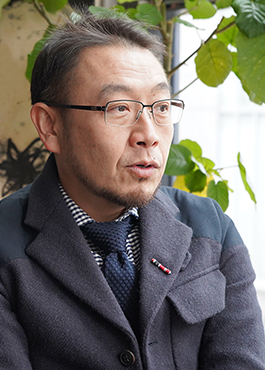
Takashi-san has a passion for creation.
He engages in product development himself, covered in wood shavings.
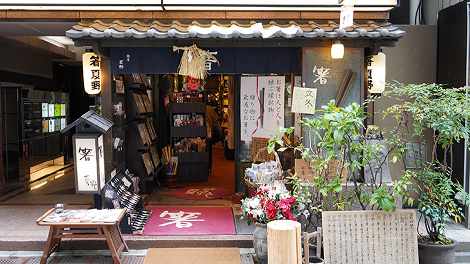
Ginza Natsuno, Ginza Main Store
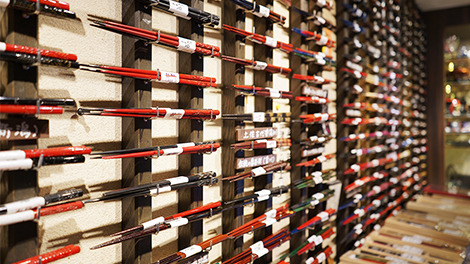
A wide variety of chopsticks are neatly displayed on the wall of the store.
Continuing to question “richness”
- ─ You have published a book on chopsticks, too.
- Yes. The book is dedicated to the late Mr. Masayoshi Yamada, a chopsticks artisan that I respect and consider my master. The book is titled Jibun no hashi to deau tame: Ohashi no hanashi (finding your own chopsticks: the story of chopsticks) (WAVE Publishing).
Yamada-san was like a human national treasure because his work started with cutting down the tree and making logs. He could complete the whole process by himself. He invited me to stay at his home, and I learned much from him. I doubt there will ever be anyone else like him.
Yamada-san’s chopsticks are, to be honest, fuzzy and come in different shapes. In times when standardized products are demanded by he market, his chopsticks fail to meet commercial standards but I like how they feel handcrafted. They can also be used very comfortably.
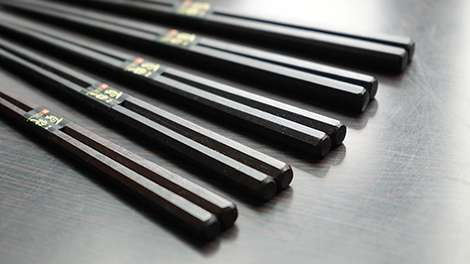
Works by chopsticks artisan, Masayoshi Yamada
- We also sell lacquerware. Lacquerware and chopsticks do not sell just for their high quality. Many people say that lacquerware is expensive, but they are very firm and can be used for 100 years if you re-coat them. They are actually very environment-friendly.
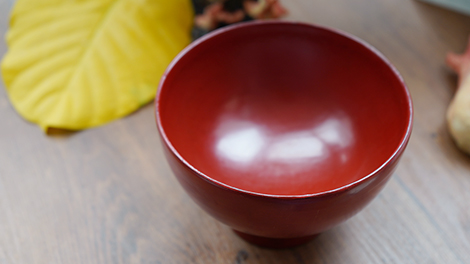
Takahashi-san’s favorite lacquerware bowl
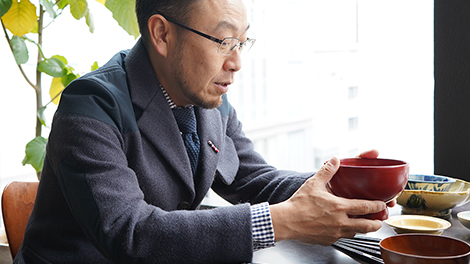
He has used his lacquerware bowl for almost 20 years. “It is my favorite and I have continued to use it despite some cracks here and there. I will leave it to the next generation to re-coat it before they use it.”
- The Japanese are a unique people because they feel that certain plates and utensils belong to individuals. Each family member has his own chopsticks and rice bowl. This is rare in many other countries.
Moreover, Japan’s tableware culture is amazing. First of all, plates come in many different shapes, with a rich variety of decorations. Given so many producers all over Japan, we have quite a high level of tableware quality.
However, less people eat at home nowadays. The dining industry has become very strong and people do not have the time to eat at home. I believe that how you eat at home has a great impact on how enriched a person’s life can be. Even if you are not using the best of ingredients, anything that one takes time to prepare tastes delicious.
When I visit chopsticks artisans, I always enjoy the food that is served by his wife, although they always say, “I only used what I had at hand.”
A person’s life can change with how he eats, and tableware is the essence that makes meals at home exciting and enriched. This has an especially large impact on children.
At “Konatsu,” our specialty store for children’s chopsticks and Japanese tableware, we engrave children’s names in the tableware out of the hope that if children know that something is their own, they will be inspired to take good care of it.
With the times in Ginza, a town to stroll in
- ─ Please share your feelings for Ginza
- As described by the term “Ginbura,” Ginza is a town where you can stroll around.
The streets follow a grid pattern and each street, large and small, boasts unique stores and boutiques. You can see why a long-established store has been in business for such a long time, the moment you step in.
I am hoping that my chopsticks store will last for a century. Most long-established stores tend to run businesses that are associated with food – for example, Japanese confectionery stores and sake breweries.
I believe food culture survives the times because of its importance. I am sure that the Japanese will never stop using chopsticks.
In contrast, it is also true that good things that have been around for hundreds of years are not selling well. Using a favorite item for a long time is a beautiful practice, and I believe chopsticks and tableware are tools from which future society can learn important values. Ginza is the perfect place for communicating this.
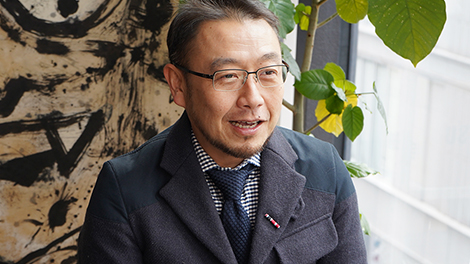
- More details can be found here.
- Ginza Natsuno http://www.e-ohashi.com/
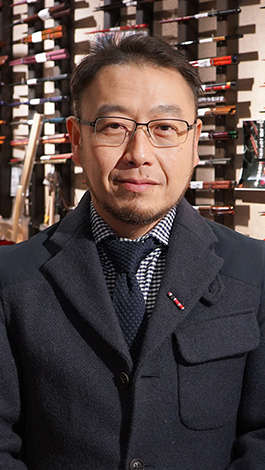
President, Ginza Natsuno
Ryuta Takahashi
Born in Tokyo in 1973. Takahashi-san opened Ginza Natsuno, specializing in chopsticks, in May 1999, and “Konatsu,” specializing in Japanese children’s tableware, in June 2003. He is CEO of “Gallery Mon” in Kazama City, Ibaraki Prefecture. He is currently actively engaged in efforts to promote Japanese culture through “lacquerware culture,” beginning with chopsticks. “Natsuno,” his chopsticks store in Aoyama is a popular destination with many foreign customers. Publications include The Ultimate Chopsticks (Sanseido), and Jibun no hashi to deau tame: Ohashi no hanashi (finding your own chopsticks: the story of chopsticks) (WAVE Publishing).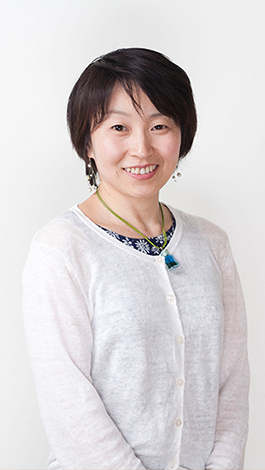
Makiko Imai
alterna http://www.alterna.co.jp Having worked for several foreign IT firms, Imai shifted the target of her work to environmental and social issues after participating in the tenth meeting of the Conference of the Parties (COP 10) to the Convention on Biological Diversity as an NGO member. She currently conducts interviews, edits and writes articles, develops educational programs and offers interactive counselling sessions.Written by: Makiko Imai/ Planned and edited by: alterna
All List
- Ginza×CSR・CSV Vol.39 Oris Japan
- Ginza×CSR・CSV Vol.38 MOTHERHOUSE
- Ginza×CSR・CSV Vol.37 CITIZEN
- Ginza×CSR・CSV Vol.36 LOFT Ginza
- Ginza×CSR・CSV Vol.35 Ginza Natsuno
- Ginza×CSR・CSV Vol.34 Yamano Music
- Ginza×CSR・CSV Vol.33 BRITA Japan
- Ginza×CSR・CSV Vol.32 ITOYA
- Ginza×CSR・CSV Vol.31 UNIQLO Ginza Store
- Ginza×CSR・CSV Vol.30 GINZA SIX Retail Management
- Ginza×CSR・CSV Vol.29 Ginza Kimuraya
- Ginza×CSR・CSV Vol.28 Lond
- Ginza×CSR・CSV Vol.27 cafe 634
- Ginza×CSR・CSV Vol.26 Ginza Cave Fujiki
- Ginza×CSR・CSV Vol.25 TBM
- Ginza×CSR・CSV Vol.24 Ginza West
- Ginza×CSR・CSV Vol.23 Ginza Sayegusa
- Ginza×CSR・CSV Vol.22 Ginza Tomato
- Ginza×CSR・CSV Vol.21 Kuipo Co., Ltd.
- Ginza×CSR・CSV Vol.20 Seiko Holdings
- Ginza×CSR・CSV Vol.19 SAPPORO LION
- Ginza×CSR・CSV Vol.18 Ginza Grand Hotel
- Ginza×CSR・CSV Vol.17 Isetan Mitsukoshi LTD Mitsukoshi Ginza Store
- Ginza×CSR・CSV Vol.16 Ginza Social Film Festival
- Ginza×CSR・CSV Vol.15 Yarakasukan
- Ginza×CSR・CSV Vol.14 Hakutsuru
- Ginza×CSR・CSV Vol.13 Swan
- Ginza×CSR・CSV Vol.12 Ginza Tanagokoro
- Ginza×CSR・CSV Vol.11 Mikimoto
- Ginza×CSR・CSV Vol.10 Novarese
- Ginza×CSR・CSV Vol.9 Sony Building
- Ginza×CSR・CSV Vol.8 Pola Orbis Holdings
- Ginza×CSR・CSV Vol.7 Ricoh
- Ginza×CSR・CSV Vol.6 Chuetsu Pulp & Paper Co.
- Ginza×CSR・CSV Vol.5 ALBION
- Ginza×CSR・CSV Vol.4 Bunshodo
- Ginza×CSR・CSV Vol.3 Recruit Holdings
- Ginza×CSR・CSV Vol.2 Specified Non-Profit Organization Ginza Honey Bee Project
- Ginza×CSR・CSV Vol.1 Shiseido








